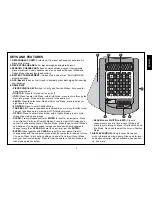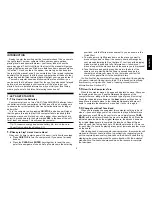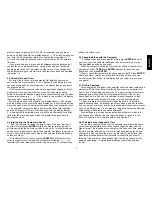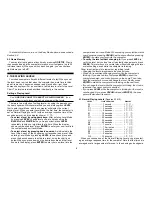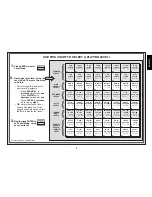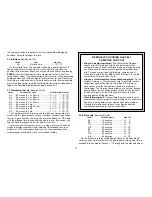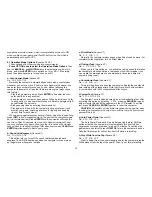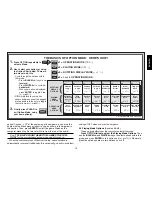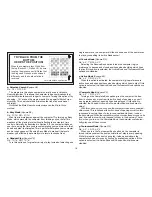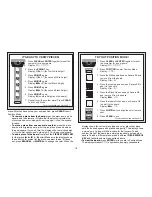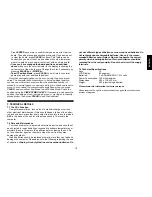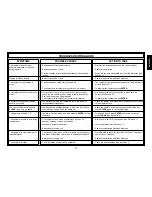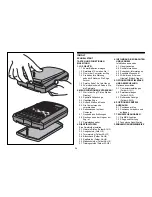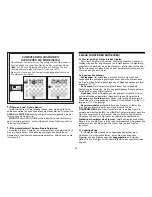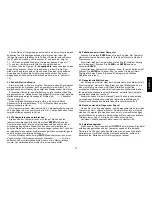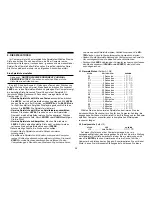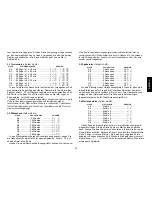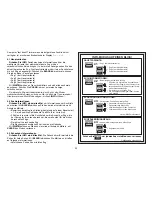
17
ENGLISH
h. Book On/Off (Square H2)
On:
+bOOk
Off:
-bOOk
Set this option to
-BOOK
to completely lock out the computer’s built-
in book of openings. When you turn the book off like this, the computer
is forced to take time to think of its moves from the very beginning of
the game, rather than using moves contained in its memory. For more
details on openings, see Section 2.7.
If you turn the book completely
off, all other book options are also automatically disabled.
5.3 Rotating Display Options (Squares A3-H3)
IMPORTANT: The Rotating Display feature is only activated
WHILE THE COMPUTER IS THINKING.
Normally, the computer’s display shows the time for the player to
move. However, the computer can also display other information, as
described in Section 4 (Info Mode). The Rotating Display feature works
hand-in-hand with Info Mode, since it allows you to choose which of the
Info Displays you want to see, and then cycles your choices in one-
second increments. You may turn on any or all of the Rotating Display
options, as desired.
Press OPTION three times to select the Rotating Display Op-
tions. Then use the BLACK/
>
and WHITE/
<
keys to select the
options you want to see rotated in the display. The options are de-
scribed below and summarized in the Option Mode Chart in this sec-
tion. Press ENTER to turn these options on (+) or off (–). Or, simply
press the option squares to turn the options on or off.
If you think the display information is changing too quickly when it
rotates, press INFO to freeze the display. Successive presses of INFO
and the BLACK/
>
and WHITE/
<
keys will allow you to cycle through
all the displays manually, as described in Section 4. To start the display
rotation again, press OPTION followed by CLEAR. In any event, when
the computer starts thinking about its next move, the display automati-
cally starts rotating again.
The game information you can see
while the computer is thinking
includes the following:
•
rd:1
to
rd:4
= the predicted line of play (up to four individual
moves)
•
rd:E
= an evaluation of the current position
•
rd:d
= the computer’s search depth, and the number of moves
examined so far in the game
•
rd:n
= the number of nodes searched per second
•
rd:t
= the amount of time the move has taken so far
When requested information is not available, the display will show a
series of dashes (– – – – –).
For complete descriptions of these options and details on exactly
how to interpret the displays, see Section 4.
6. VERIFYING/SETTING UP POSITIONS
6.1 Verifying Positions
See “IT’S EASY TO VERIFY PIECES!” for a step-by-step ex-
ample of using Verify Mode.
If you should knock over the chess pieces or if you think your board
position may be incorrect, the computer can verify all the piece loca-
tions for you!
When it is your turn, press one of the PIECE SYMBOL KEYS (
&
,
%
,
$
,
#
,
@
, or
!
). The computer shows you where the first piece of that
type is located on the board—the display shows the piece symbol, color
indicator, and square designation. Press the same PIECE SYMBOL
KEY again to see the location of the next piece of that same type. All
the White pieces are shown first, then the Black pieces. When there are
no more pieces of that type, only the piece symbol remains in the
display.
Want to verify more pieces? Simply repeat the above procedure
using the other PIECE SYMBOL KEYS, verifying the entire board if
desired! Press CLEAR to return to normal game play.
6.2 Changing and Setting Up Positions
See “TRY OUT POSITION MODE!” to get an idea of how this
feature works.
Position Mode is an exciting feature which lets you set up special
board positions to play from, or problems you want the computer to
solve!
Caution: All previous moves in your current game will be erased
from the computer’s memory if you make changes to the position during
a game.
Press POSITION to enter Position Mode, and the display will show
-POS-
. You can change or set up a position whenever it is your turn to

